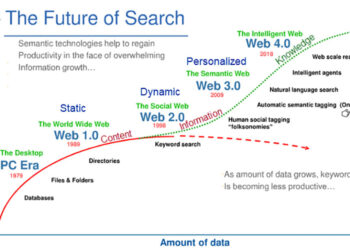At last week’s Society for Scholarly Publishing (SSP) Annual Meeting, Chris Lintott, an astrophysicist from The University of Oxford and a leader in the “citizen science” movement, gave a keynote that had the 950+ attendees buzzing the entire meeting. During his excellent talk, he spoke tangentially about open access (OA), noting that his experience has been that when it comes to science crossing over into useful information to the general public, access is not the issue. It turns out that the issues related to public accessibility and engagement are much more complicated.

One issues involves a subtle and generally inadvertent intimidation. Lintott noted what museum curators and cultural observers have dubbed “threshold fear,” which occurs when an impressive museum facade, an exalted public perception of a cultural institution, or both, generate an effective barrier to engagement and usage. Potential but novice patrons of an art gallery may see the fancy entrance and find it all too off-putting. Rather than risk embarrassment or belittlement, they walk on.
Yet, these thresholds convey different messages to art lovers, art historians, and art connoisseurs — they reinforce the exclusivity these practiced audiences crave, the highbrow distinctiveness of the rarefied world of art, and the prestige of having gained both physical and mental access to this complex and multi-layered world.
The threshold has a double-edged effect — it legitimizes and confirms the insiders, repels and dissuades outsiders.
In scholarly publishing, we have many thresholds to cross, not the least of which is how our articles look. The ongoing popularity of the PDF suggests that the established aesthetic of academic publishing is important to scholars, confirming that they are encountering a paper written for them.
But aesthetics are not the only — or even the major — barrier to public utility of scientific information. There are at least three other major barriers:
- Jargon and specialized language usage — Having traversed a few scientific disciplines, it’s always interesting how jargon-filled each is, how acronyms and some jargon have completely different meaning between disciplines, and even how regular words in English have different connotations in different fields. Addressing these challenges is difficult. Reading levels for Wikipedia are already too high for the majority of readers, for example. Lintott noted an attempt to generate PDFs with hyperlinks to jargon words and phrases, in order to help the public grapple with this problem. The reaction? Lack of usage, and a general dislike for the approach because it smacked of condescension.
- Context — Mixed into jargon and specialized language usage is the more difficult and subtle issue of context. Context can mean both the field and its relation to other fields, but also the context over time. Fields change. New research shifts the paradigm. Words and concepts take on different shadings. A paper plucked out of a 1970s archive by a member of the general public is difficult to put into the context of 2014 research if you’re not smack dab in the middle of 2014 research trends. Working professionals struggle to maintain their context within their own fields. It’s unrealistic to expect the public to possess any appreciable context for highly specialized research results, even if they know every word.
- Time — Citizens have jobs and lives of their own. They are not full-time scientists or researchers. One great example from Lintott was an older gentleman who used Zooniverse to identify planets, but only “after the gardening was done.” Even in the admirable world of citizen science, the public time-slices a few minutes here and there into their busy lives to do some science, to dabble. In some arguments about public access, it’s as if there is a belief that all the teachers, accountants, managers, drivers, administrators, coaches, lawyers, welders, photographers, restauranteurs, and cashiers of the world are prepared to drop everything to partake of the flood of research to which they suddenly have access. The reality is that a fraction of a fraction of a percent will ever seek this information out in a systematic way, and even then will be far too busy to be efficient about it.
Chris Lintott’s talk occurred while I was reading about other things that seemed related to me — namely, the New York Times’ “Innovation” Report, and the increasingly frequent reports about measles outbreaks.
I agree wholeheartedly with Lintott that access is not the main issue when it comes to providing the public with information about science. It becomes clearer if we listen to what they want — information about science. And the professionals who are good at providing information about science are science journalists.
Vaccination was called into question at a time when science journalism was in full crisis, and it continues because that crisis has resolved into a situation where there is much less authoritative science journalism available. In a recent episode of Neil deGrasse Tyson’s excellent StarTalk Radio podcast, science journalist Miles O’Brien talked about his long history in science journalism, and how it went from a centerpiece for CNN to a castoff for all the major networks, as business decisions focusing on low-cost and high-churn news took over. Now at PBS, O’Brien can cover science effectively, but he has limited reach to a self-selected audience that excludes much of the general public (PBS creates a threshold fear all its own).
The crisis in science journalism was not just for broadcast or cable television, but went into radio and newspapers, as well. The Wall Street Journal, the New York Times, and others cut back as budgets tightened. Newer players focus on traffic bait pieces, which sometimes involve science, but too often focus on lurid science (which may explain why PLOS ONE catered to this with a paper entitled, “An In-Depth Analysis of a Piece of Shit: Distribution of Schistosoma mansoni and Hookworm Eggs in Human Stool” and why journal headlines in general have leaned more on puns or shock words or acronyms that hint at both).
A conceit of the OA movement is that access solves a public problem. But this is the view from inside the bubble — it is akin to saying that if only the public joined us in the bubble, or we somehow expanded the bubble, they’d enjoy the same lifestyle we do. It is flattering to those in the bubble. In addition, it presumes this is what other citizens want, or that there’s room in the bubble for everyone.
In any event, engagement isn’t about bringing people into your bubble, but going to meet them where they live and adjusting to how they speak, talk, and think. Public engagement takes more than public access, and it’s unclear that access is even on the spectrum of engagement.
I’d written this post before I was aware of the Authors Alliance, which Rick Anderson discussed yesterday. It’s striking how passive and “come into our bubble” their pronouncements seem:
The mission of Authors Alliance is to further the public interest in facilitating widespread access to works of authorship by assisting and representing authors who want to disseminate knowledge and products of the imagination broadly.
In other words, Authors Alliance represents those in the bubble, and hopes to increase access to the bubble for those outside of it. This is far from actual engagement.
Engagement is both difficult and expensive. A show like “Cosmos,” currently wrapping up its run on FOX in the US, costs millions to bring to the market. Its effect will be significant, as it has achieved a high level of engagement with audiences young and old. An initiative like the Alan Alda Center for Communicating Science takes millions to run properly, and it has achieved great engagement. The FIRST Robotics competition, the Maker Faire, and other initiatives that engage the public in STEM fields are expensive, targeted, carefully crafted, and very effective. But designing them takes much more than access.
The same goes for Chris Lintott’s excellent work with citizen science. Each instance, from astronomy to history to penguins, had to be designed and promulgated carefully, targeted to a specific purpose to achieve engagement. A firehose of articles lacks any similar stab at effectiveness.
More and more journals are realizing that the research paper isn’t sufficient for engagement that translates to wider audiences. Major general science journals like Science and Nature realized this a long time ago, and each has robust news and insights sections. Major medical journals like the New England Journal of Medicine and JAMA have also increased their front sections to draw in more readers and touch more timely topics each issue. JAMA has an excellent “Patient Page” each issue, which describes a medical condition with great illustrations and simple text. These efforts to move outside the bubble, or to at least different sectors of the bubble, can work quite well.
Increasing engagement takes investment, purposeful design, persistence, and outreach. Access is passive. Engagement is active. What are you doing to increase engagement?
Discussion
13 Thoughts on "Life in a Bubble — The Limitations of Public Access, the Challenges of Public Engagement"
This is a wonderful post and full of important insights explicating the low usage of potentially broadly important journal articles. Regretfully, my subjective experience has been that there is little one can do to motivate journal article authors of original empirical research to write more clearly. Each specialist indeed “has his/her own language.” The “really important” research of merit has to be sifted through and explained more clearly either through well-written literature review articles published either in major high-use journals, or in books intended by the author to be read by the broader “citizen science” audiences that Kent describes. Put in another way: it is not economically feasible to carefully copy-edit journal articles with the intention of making them more understandable. There is no economic pay-back. In major book programs, one has hopes and possibilities of selling more copies because a more dedicated copy-editing and line-editing effort, combined with a later marketing effort, can indeed result in more sales.
In the journal articles, isn’t readership more “pulled along” by certain slow-changing, citation based natural laws of usage, while in In book publishing, one is potentially more captain of one’s fate?
One has to consider though, the purpose of the journal article, which is a highly-evolved format for communication of research results among experts. Jargon is necessary for brevity, and there’s an assumption of the reader’s knowledge. If I had to write my old journal articles for a lay audience, I’d have had to start with “what is DNA?” and been a few hundred pages into the article before even mentioning my results. As a researcher, that wouldn’t have been a particularly efficient use of my time (particularly if every other researcher on earth was duplicating my efforts for their own papers). And as a researcher reading a paper, I don’t want to have to wade through all that background stuff to find out what’s new.
So the notion of the journal article as an outreach tool to the lay public may be somewhat misguided. If we want more people to take up skiing, we don’t send beginners down the black diamond expert run.
Kent a great article. I think that the reasons folks are put off by science articles are deeper than just the offered. Lets admit it, science is not only tough stuff but it also it flies in the face of what most people think is so. Thus, as point four I would add cultural barriers.
According to a recent Gallup poll some 46% of the population believe in Creation Science. Also, according to Gallup 75% of the population believe the Bible is the actual word of God. Why would we expect folks to be able to read a scientific article? It seems to me the great barrier to making science more accessible is not clear writing – witness A Brief History of Time which has only sold some 20 million copies in 20 years and Tyson being attacked by creationists because of his program – but a lack of interest because for most answers lie elsewhere.
As for OA, is there any indication that readership has increased because of it?
Interesting article. I think the answer (or at least, an answer) is to write wikified (perhaps automatically via dbpedia) and structured lay abstracts (perhaps 200, 250 words long). As DC comments, it’s too much to expect researchers to write papers in lay terms (also: please don’t, articles are quite long enough to read as it is), but an overview (particularly one that can be partially re-used over the course of a research period) is far more reasonable. I would also urge abandoning the first/third person vernacular and starting with a clear objective:
“We are trying to find ways of making electronic devices that use less electricity”, “My work is trying to judge how well scholarly research is used outside the academic world” etc. There are lots of people interested in storifying science to make it more digestible and attractive, eg, http://www.minimanuscript.com/, https://www.facebook.com/groups/ScienceStorytelling/
What you call jargon is the technical language that is necessary for every research area. Researchers are talking about things in the world that no one else talks about so new language is required. Discovery and language advance together, so new language is a good way to track scientific progress. But the technical language embodies specialized knowledge so people lacking this knowledge cannot understand the words.
However the technical language can be “dumbed down” and this is what journalists do, as I myself did for a decade or so, explaining relevant new science to mostly engineers in the electric power industry. In this case it is the journalists who might benefit from access. I often worked just from press releases and abstracts. If it was really important I got a copy from the lead author, if I had the time.
Citizen (or amateur) scientists are a very different case. These people typically have mastered at least some of the knowledge and so understand the technical language. They too might benefit from access.
Both the journalists and the amateurs are already engaged in the science so that is not an issue.
To answer the closing question, I ran an experiment for several years by volunteering to be book review editor for the local paper in State College, PA, while I was director of Penn State Press. I particularly wanted to engage the broader public more in reading the books issued by university press that the presses themselves considered to be of “general interest.” I commissioned reviews of 600 words from both Penn State faculty and members of the community (lawyers, doctors, etc.). The Penn State bookstore and the local public library both cooperated by posting the reviews and making sure that their customers could buy (at the bookstore) or borrow (at the library) copies of these books. This was a modest effort to bridge the town/gown divide, and it was moderately successful. Over 60 books were reviewed in a period of about three years. While genuine products of scholarship written by scholars themselves, and not journalists, these books were of course aimed at a broader audience than the typical scholarly journal article. But they did succeed in bringing important new advances in scholarship to the attention of a broader public. This experiment has not been repeated anywhere else, however, to my knowledge.
So, open access is a necessary but not sufficient condition for broadening the impact of scholarly work. The other enabling ingredients include things such as interpretive journalism, story-fication, literature reviews, textbooks, etc. Making those enabling activities economically viable is the main barrier then, not openness itself.
Do not forget the blogosphere, which has dramatically broadened access to new science. What amount to lay journal clubs abound.
One aspect of engagement with scientific research that I think Kent is overlooking are the producers of the grey literature. These people often have a PhD and can understand scientific papers. They’re in the public or private sector because they gave up on landing a faculty position, and they now need to access the literature so they can make informed decisions for their organizations. It’s unrealistic for them to take out subscriptions for the myriad of journals they might want to use, so open access is a real boon for them.
Thanks, Kent, for the hospitality and for the write up of the talk. I would like to clarify slightly the point I made which was that *in astrophysics* the lack of open access isn’t a barrier to engagement because essentially all of astrophysics papers are on the arXiv. I believe that such access to knowledge is an essential part of the solution to engaging a wider part of the public in research, but astrophysics provides a very clear case study in it not being enough!
Tim Vines’ point about producers of gray literature is a good one too, and I wish I’d thought to extend my argument to citizen journalism too. Actually, perhaps that should just be ‘journalism’ – my colleagues at the BBC have access to very few journals.




